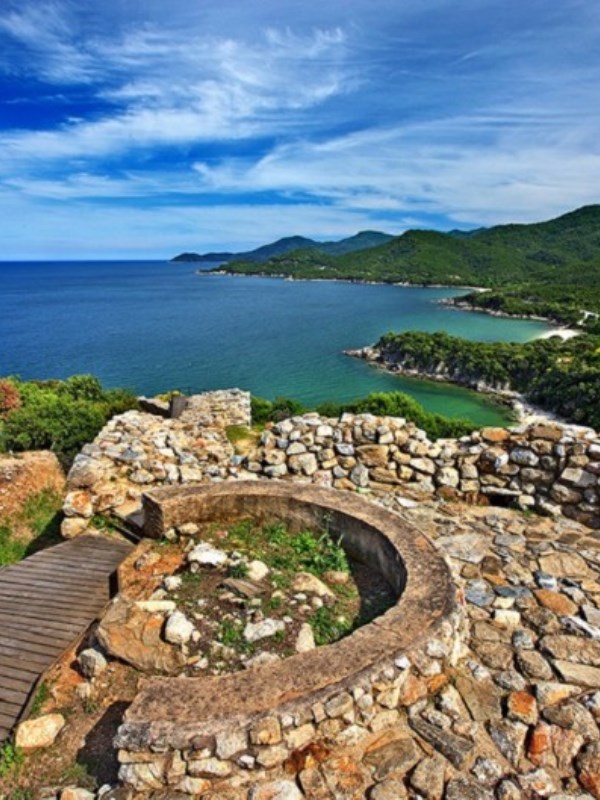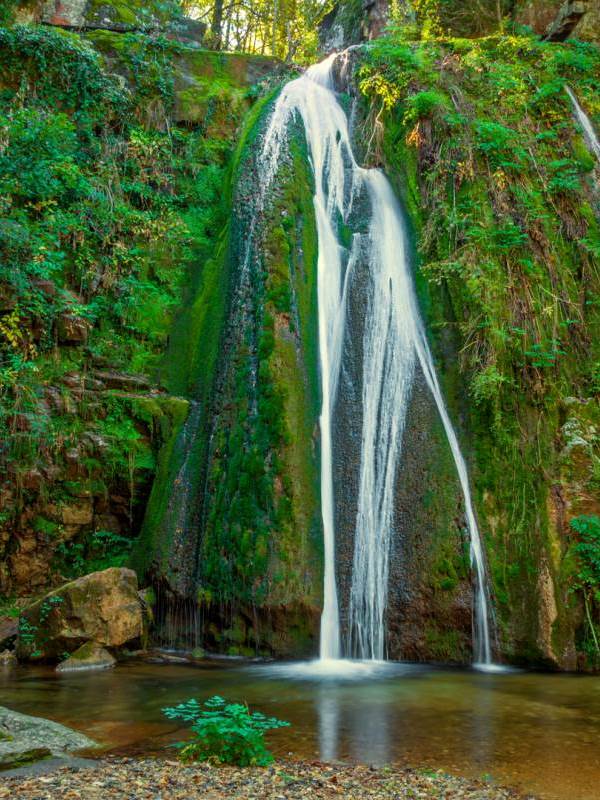Location
Villa PavlinaOlimpiada village, built alongside a beautiful beach, stretches in a bay of a natural harbor. It is surrounded by green mountains and magnificent beaches that attract a lot of visitors. Cultural and artistic events take place each summer on St. Kyriaki holiday, among them the one regarding Aristotle, the great philosopher who was born in Ancient Stagira.
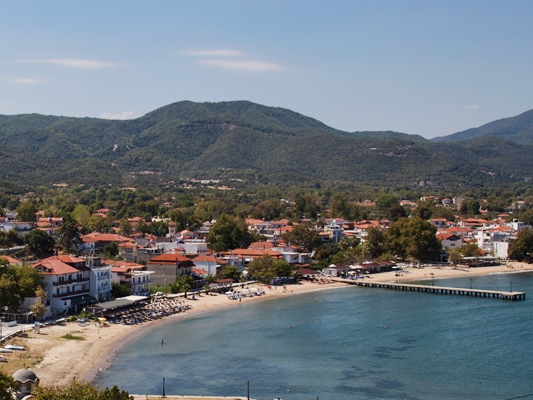
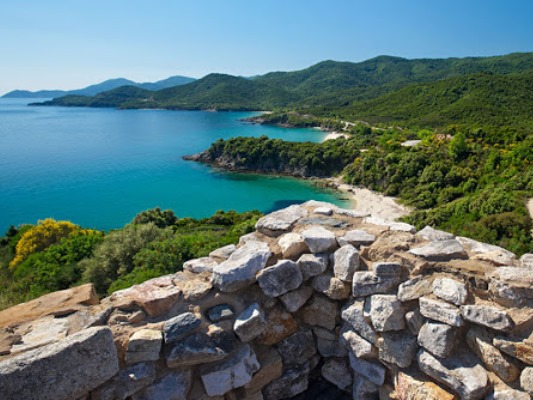
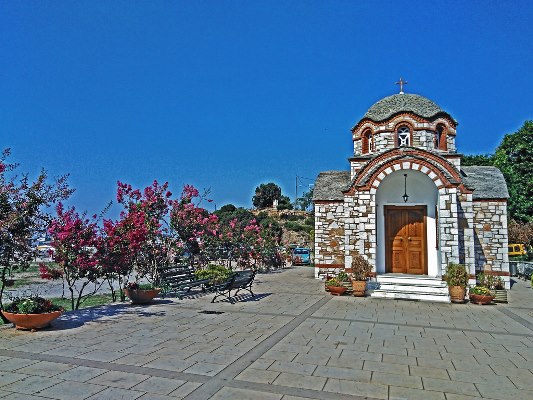
Sightseeing nearby
- Ancient Stagira – Aristotle’s Tomb
- Kafkanas island
- Waterfalls (5,4 km.)
- Aristotle’s Park
- Mount Athos (66,4 km.)
Ancient Stagira: The birthplace of the philosopher Aristotle was a colony of Andros, founded in 655 B.C. The first name of the city was Orthagoria.
Ally, initially of the Athenians and later of the Spartans, the city was occupied by Philippos in 349 B.C., after the destruction of Olynthos. Philippos, however, rebuilt the city in order to honor the great philosopher, tutor of Alexander the Great. When Aristotle died, his fellow-citizens transported his bones to Stagira and set up a monument.
The excavations in the region began in 1990. The most impressive piece that was brought to light is the wall, at the top of the hill that was built in the classic years. The different ways of construction can be distinguished. The wall determines the western limits of the ancient city, surrounded by the sea. The powerful fortification supplemented round and square towers and ramparts that connected with heavy scales. At the top of the hill also appears the relic of the citadel. At the part behind, between the hills, is the well-maintained remainder from some beautiful, spacious public building, with a gallery and a monumental facade with pillars.
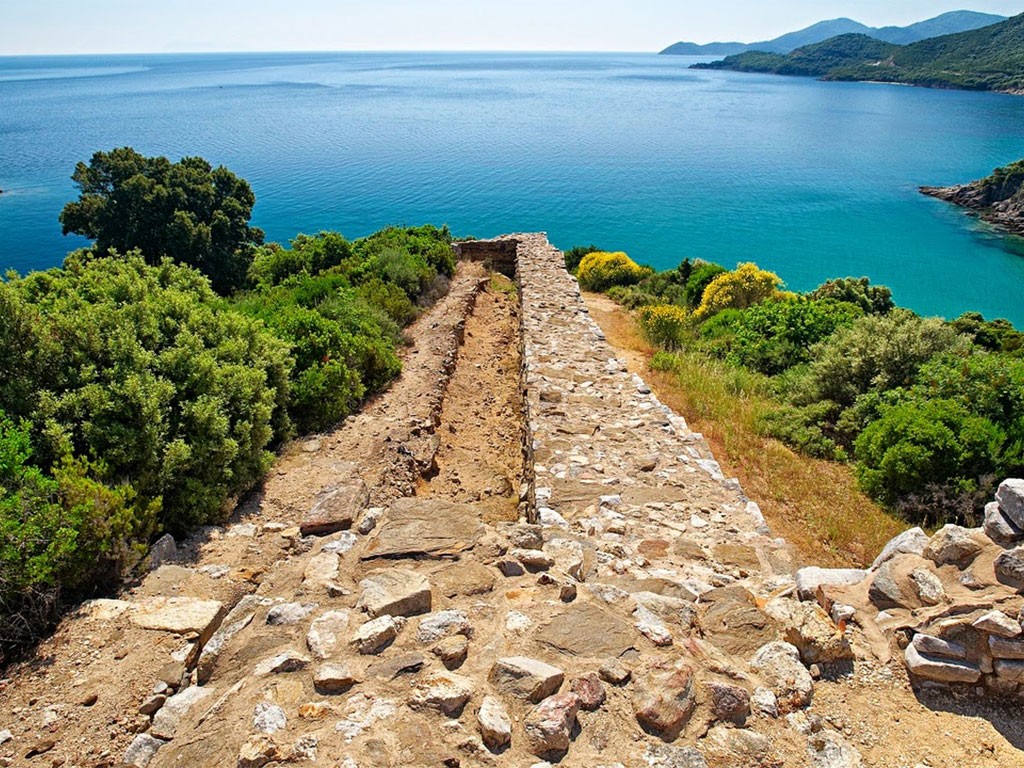
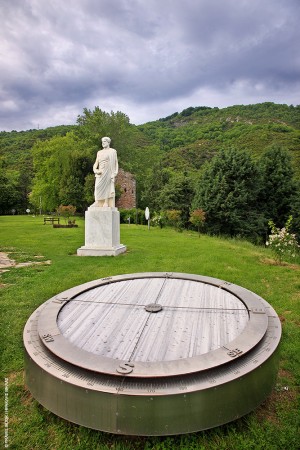
Aristotle’s Park: Is a must not only because it’s the only thematic park in Halkidiki but mainly because it is created in honor of the great Greek philosopher. And let’s be honest here.
In the park, you can see the instruments (optical disks, telescope, sun clock, pentaphone, prism, compass, sounding bars, lens, water turbine, & pendulum) mentioned in Aristotle’s textbook “The Naturals” which explain the natural phenomena.
Although the grove pre-existed, the instruments were added in 2003. The statue of Aristotle stands there side by side with the instruments which illustrate the way the philosopher studied the phenomena in nature and gives you the opportunity to pay tribute to the Aristotelian thought that has shaped all forms of knowledge thereafter.
Not only will you and your children enjoy the interactive games but a splendid view of the gulf of the Ierissos village. No wonder that the park of Aristotle has become one of the most visited tourist destinations every summer and the one you will be happy to go too.
Waterfalls : Between the villages Varvara and Olympiada, one can find two amazing waterfalls in a forest full of taxus, alders, lindens, beeches and wild hazels.
Both the location and the feeling of calmness and serenity will make you feel like you have discovered a small paradise.
You will notice the two waterfalls entering the ravine after you have parked your car. The water leads to Mavrolaka, a river that is the boundary between Olympiada and Varvara. You will see the first waterfall from above, whereas in the second one you will feel its momentum even in the summer. It takes a short walk (5-10 minutes) to discover this wonderful place. Both the wooden bridges and the proper marks on the path contribute to the enjoyment of the unique scenery. It is ideal for families with kids who will be thrilled!
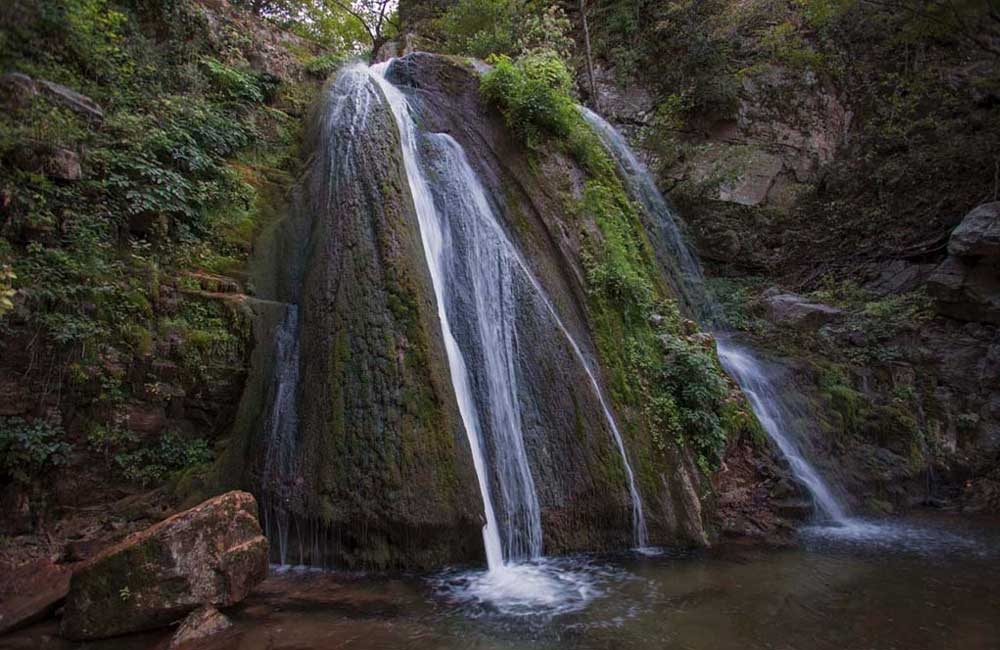
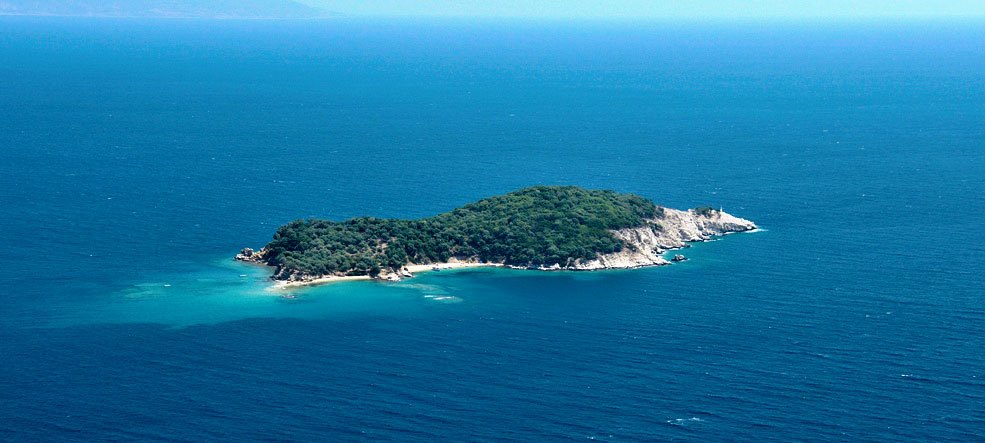
Kafkanas island: It is also known by its ancient name Kapros (also Capros or Caprus; Greek, Κάπρος, wild boar), which was also the name of the bay and Stageira’s port, Kapros Limani. It was referred to by some scholars in the early 20th century as Kapronisi.
According to legend, Olympias (also known as Olympiada), the fourth wife of Philip II of Macedon and mother of Alexander the Great, was banished either to Stageira or the island of Kapros by Cassander, her rival for control of Macedonia, after he had defeated and captured her at Pydna in 316 BC. The village of Olympiada traces its name to this legend.
Mount Athos: Commonly known as the Holy Mountain- is the spiritual capital of the Orthodox Christian world, consisting of 20 monasteries, 12 skites, and about 700 houses, cells or hermitages and approximately 2,000 monks. The “Garden of Virgin Mary” is the paradise of the eastern peninsula of Halkidiki! The Monastic State of the Holy Mountain is known to be the main carrier of Orthodox Christianity and holds spiritual glory and great history. It is a religious community with 1.000 years old monasteries, cells in caves or between the rocks, towers, domes, belfries, chants, etc. It is listed in UNESCO’s WORLD HERITAGE MONUMENTS.



